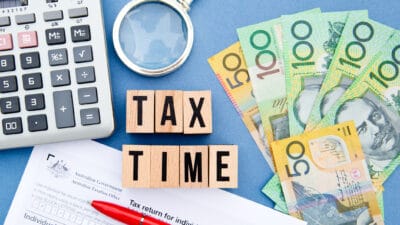Offset accounts have grown increasingly popular in this high-interest-rate era. Last month, NAB revealed that almost 70% of its new eligible customers now opt for an offset, compared to 50% only two years ago.
Paying less interest on a mortgage using an offset can save a tonne of money. Even I, a devout long-term investor, use an offset account. However, there's a silent cost in parking spare cash in the interest-saving product over investing it in ASX shares that most people probably don't know about.
A common misconception
Albert Einstein famously said, "Compounding interest is the eighth wonder of the world".
Anyone with a mortgage, especially now, will feel like their loan will take forever to repay. Fortunately for us, the interest we pay is 'simple interest' and not the compounding variety, unlike credit cards, where interest often does compound.
Like your home loan, the funds in an offset account don't generate compound savings.
For example, $50,000 at a variable interest rate of 7.54% will save $3,770 worth of interest in a year. That's nothing to sneeze at, for sure. Still, assuming the offset balance and rate stay the same, the savings next year — and every year after — will only ever be $3,770.
This is where ASX shares (or any form of stocks) really shine.
Imagine $50,000 in shares. Let's say the portfolio returns the same 7.54% in the first year; we now have $53,770 — accruing $3,770 like the offset account. However, if it were to grow by 7.54% again in the second year, the portfolio would have increased by $4,054.26.
Obviously, the stock market isn't a straight line going up and to the right. There are bumps along the way. But even with those bumps, the S&P/ASX 200 Index (ASX: XJO) plus dividends has returned 9.2% per annum on average over the last 30 years.
Returns from ASX shares can be MASSIVELY different
You might say, "Oh well, the $284 difference isn't much". But that's only the difference between offset savings and potential returns from ASX shares in the second year. Let's look at a hypothetical 30 years worth of compounding.
Sticking with the $50,000 comparison, using an offset account would save $113,100 of interest. Meanwhile, a $50,000 portfolio compounding at 7.54% (below the historical average) would deliver a $392,661 return.
I know which I'd prefer.
This isn't to say an offset account is worthless. They certainly have their place for providing a financial buffer for extra stability.
The key point here is not to equate the savings from an offset account to the potential returns from the stock market.
At an interest rate of 7.5%, the 'risk-free' option of holding cash in an offset looks similar to the possible return from ASX shares — just without the volatility. When in reality, the two different paths are still miles apart because of the lack of compounding in an offset.









